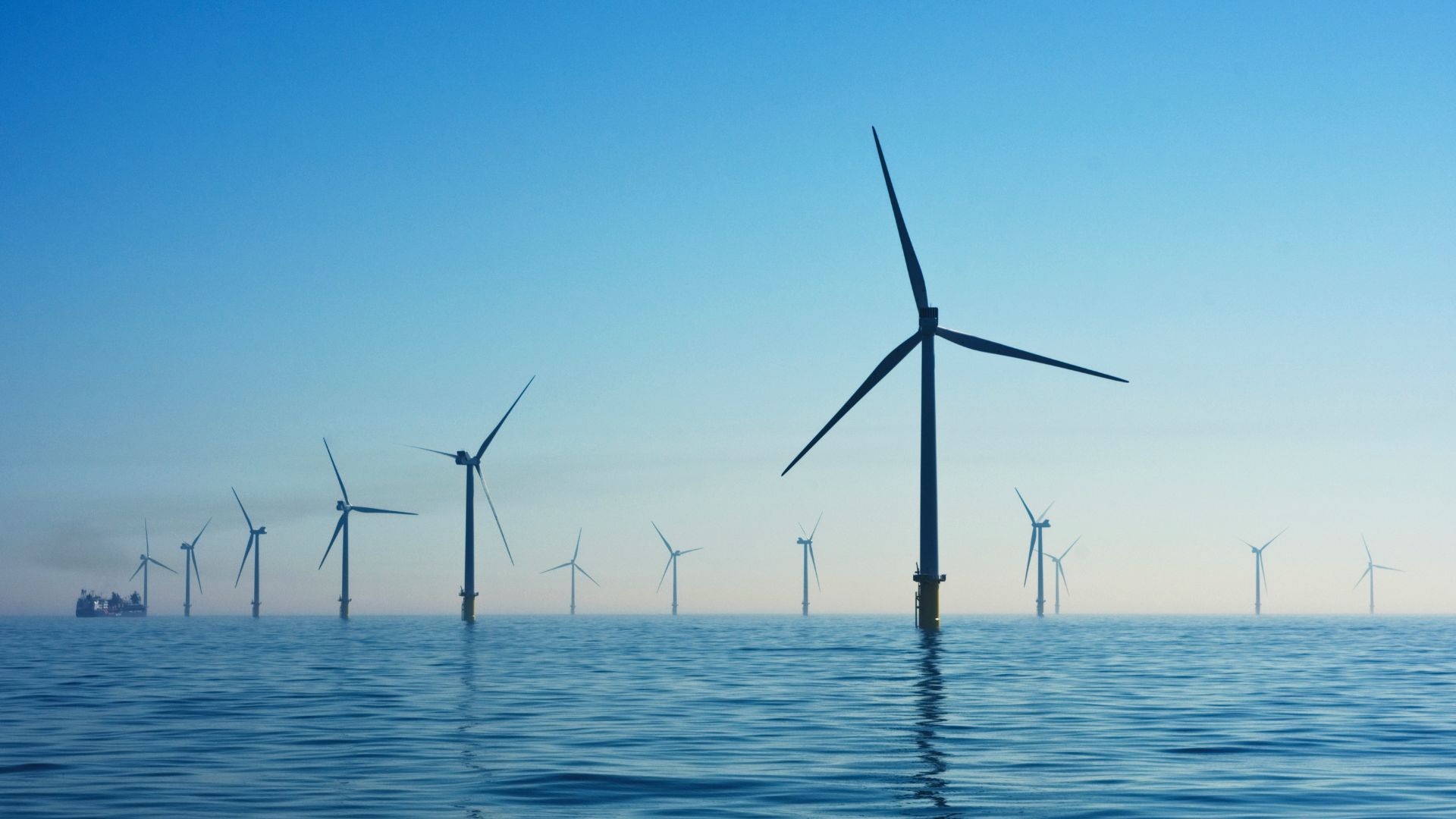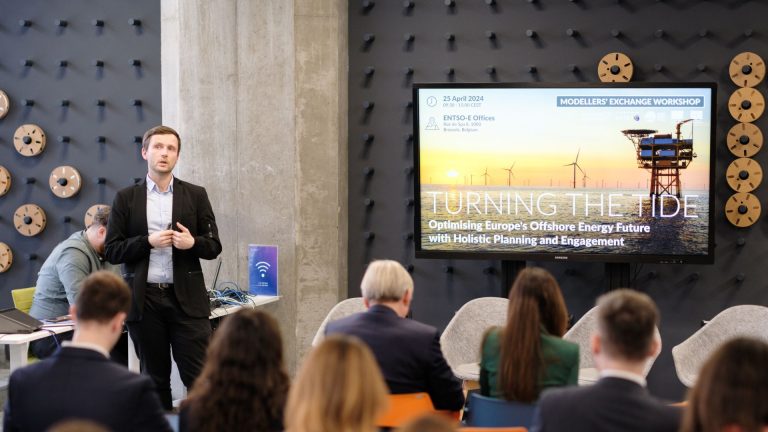Europe needs more wind power. On the road to climate neutrality in 2050, the European Union should reach as much as 317 GW of offshore wind capacity. This tenfold increase from the currently installed 32.5 GW means that the resources of all European sea basins must be tapped. To date, development has focused on the windy, not-too-deep waters of the North Sea, while ambitious plans are in place for the Baltic states, including Poland. However, the southeastern European countries of Croatia, Romania and Bulgaria also have attractive bodies of water.
Croatia – energy for export?
The warm waters of the Adriatic abound in natural and tourist values, but some bodies of water also have the potential for offshore wind energy development. Located closer to the northern border, the open waters in front of the city of Pula and the island of Mali Lošinj are adequately windy, with depths of less than 60 meters, allowing the construction of wind turbines embedded on the sea floor. In contrast, the deeper body of water between the island of Žirje and the town of Primošten has been classified as an ideal site for floating wind turbines.
A 2021 estimate by the Global Wind Energy Council suggests that Croatia could reach an offshore installed capacity of 17 GW. About a quarter of this capacity can be harnessed using the proven bottom-fixed (fixed foundation) concept. However, a recent study by national stakeholders indicates that the potential for bottom-fixed wind power capacity is much greater, at 25 GW and 32 GW in low- and medium-impact areas, respectively.
In addition to depth, the analysis took into account several other aspects that have an impact on limiting the development of offshore energy infrastructure. Assessment excluded some areas due to hydrocarbon exploitation, navigation zones, bird migration corridors, and protected reserves of rich marine biocenosis: primarily dolphin and turtle habitats. Zones where offshore wind development would have unwelcome high-impact on the socio-economic surroundings also include waters heavily used for marine transportation, tourism and fishing.
Although Croatia has significant offshore wind energy potential, it currently needs a specific regulatory framework for the technology. It is also lacking in national strategic policies and marine spatial planning. Although some changes are taking place in the provisions of the latter, it is unclear at this point whether the demarcation of areas dedicated to wind farms will be included in the updated documents.
The hitherto underestimation of offshore wind potential in the Croatian strategy is due, among other things, to the characteristics of the country’s energy system. Croatia has long relied on hydroelectric power (about 40% of its total electricity production) and has also been gradually developing inland wind farms for several years. It is to be expected that in the near future, the photovoltaic revolution will also come to this country. For these reasons, the more expensive offshore wind power industry, which requires significant grid investments, has not been a priority so far, at least with the Croatian government’s official climate goals to date.
However, clean energy from Croatian waters could also find consumers on the other side of the Adriatic – in the industrialized northern regions of Italy, currently dependent on expensive energy produced from imported natural gas. Croatia and Italy are considering building a 300 MW offshore wind farm. The European Union, through the Connecting Europe Facility (CEF), is co-funding the preparatory studies, which are being carried out by Croatian oil and gas company INA. If the project’s feasibility is confirmed, construction could begin in 2026.
Romania
According to EPG (Energy Policy Group) and the World Bank assessments, Romania also has significant offshore wind potential. EPG puts it at about 94 GW, of which 22 GW is for turbines embedded on the seabed and 72 GW for floating turbines (in deep waters). The World Bank provided a slightly lower estimate, indicating 76 GW, with the same allocation of 22 GW for fixed foundations.
In terms of the legal framework, Romania currently has no binding targets for offshore energy development in its strategic documents. This fits in with the broader problem of Romania’s low climate ambitions. In recent years, the share of clean sources in the country’s electricity mix has essentially stagnated. However, lawmakers are making some progress toward freeing up wind resources – in late December 2023, the Romanian government approved a draft offshore law, which is expected to be debated in parliament this February.
In order to realize the energy potential of offshore areas, also in the case of Romania, an expansion of electricity grids is required. EPG’s analysis shows that the most attractive bodies of water for harnessing wind energy are near the north coast, which so far has not experienced significant capacity expansions. The Romanian Transmission System Operator, “Transelectrica,” has imposed a restriction on the installation of new generating capacity until planned investments in receiving infrastructure are completed. Most of them are expected to be ready between 2023 and 2026.
To meet the challenges, EPG has proposed a Romanian-Bulgarian power island as an effective and economically attractive solution to the problem. Such an island would ultimately provide a connection to other Black Sea countries such as Turkey, Georgia and potentially Azerbaijan, resulting in significantly increased energy security and contributing to the decarbonization of the region.
Two companies that plan to build farms off the coast of Romania should also be mentioned. The first is a German developer, wpd offshore, with ambitions for two projects: Black Sea 1 (500 MW) and Black Sea 2 (1,400 MW). Another is the state-owned energy company, Hidroelectrica SA, which in its strategy has expressed a desire to build 300 MW offshore by 2026.
Bulgaria
According to an analysis by CSD (Center for the Study of Democracy), Bulgaria has a potential of up to 176 GW. Of the areas studied, the northern part of the exclusive economic zone, near the border with Romania, appears to be the most economically viable. Wind speeds there at 150 meters above sea level reach 8 m/s, and the energy potential is 4-5 GW with a possible capacity factor determined in the range of 40-48%. However, much of the Bulgarian offshore wind resource is located in deeper waters, requiring floating wind farms.
In the quoted document, CSD states that the Bulgarian grid operator’s (ESO) long-term plans to increase transmission capacity have so far not taken offshore wind development into account, although the sector is considered crucial to the future of renewables described in the National Recovery and Resilience Plan. A significant barrier in the grid aspect is also the time-consuming and unclear procedure for allocating receiving capacity for new energy investments.
Current regulations also do not specify specific goals or strategies for the development of offshore wind projects. The unstable political situation and frequent changes of government in recent years have delayed legislative work related to renewable energy sources. However, an opportunity to update the legal framework is on the horizon – a draft law on offshore renewable energy has been proposed, which aims to introduce auctions for areas with at least 1 GW of capacity by 2027 and an additional 2 GW by 2030.
Despite a number of factors limiting the sector’s development, Bulgaria is laying the groundwork for unlocking the potential of floating turbines. The French company Eolink, together with fifteen European consortium members, will erect a 5 MW demonstrator by 2025. The “BLOW” project, which involves testing an innovative rotor and experimental support structure, has won financial support from the European Union under the Horizon program.
Next steps
Unlocking the potential of offshore wind farms in Central and Eastern Europe will require carefully developed strategies inspired by more advanced markets. The European Union’s experience shows that effective implementation of green offshore energy relies on consistent public policy, sound legislation and well-planned permitting procedures. Challenges include, in particular, the need to harmonize the regulatory framework based on transparent licensing rules. Transparent regulations that encourage competition will attract private investment and minimize the cost of energy for end users. It is also necessary to increase the transmission capacity of national electricity grids; in doing so, it is worth evaluating the possibility of building special cross-border connections dedicated to offshore renewable energy sources.
One of the initiatives supporting the development of offshore energy in the CEE region is the BLUECEE – Strengthening Policy and Governance Capacity for Blue Energy in Central and Eastern Europe project. It aims to share good practices among stakeholders and strengthen readiness to deploy new generating capacity in the Black, Baltic and Adriatic Seas.
In November, as part of our collaboration on the project, together with consortium partners from Croatia (Faculty of Mechanical Engineering and Naval Architecture at the University of Zagreb), Romania (Energy Policy Group) and Bulgaria (Center for the Study of Democracy), we published a report introducing aspects of development and profiles of emerging offshore wind markets in each country.






